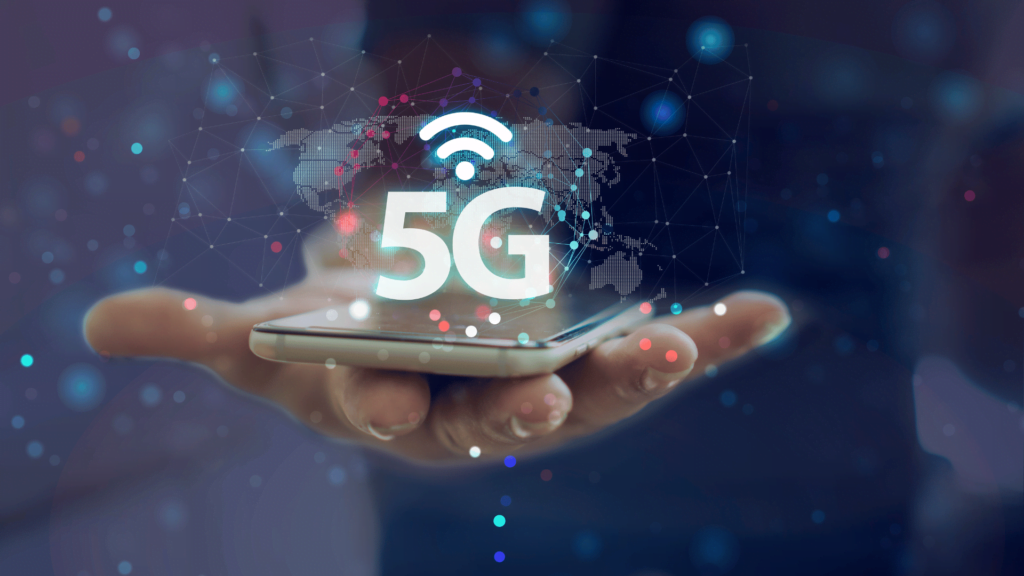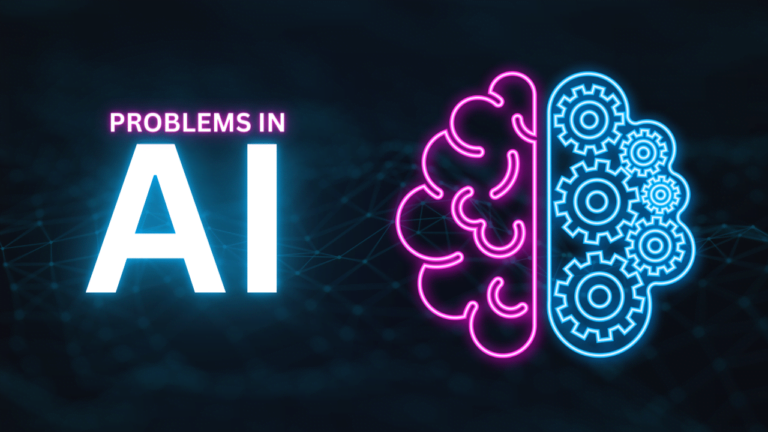Introduction
The Internet of Things (IoT) is a revolutionary concept that connects everyday objects to the internet, enabling them to send and receive data. High-speed and low-latency connectivity are what drive its widespread adoption, making it essential for dependable network connections. 5G technology, which promises faster speeds, lower latency, greater capacity, and improved reliability, has become a game-changer in IoT applications across industries like healthcare, transportation, manufacturing, agriculture, and smart cities. With ultra-fast speeds and minimal latency, IoT devices can operate in real-time without noticeable delays, paving the way for innovative solutions like autonomous vehicles and remote surgeries. 5G technology plays a pivotal role in shaping the future of IoT by providing high-speed and low-latency connectivity, leading to remarkable advancements in various sectors.
Understanding IoT
The Internet of Things (IoT) is a network of interconnected devices that communicate and exchange data over the internet without human intervention. It plays a crucial role in industries like healthcare, transportation, agriculture, and manufacturing, enabling automation, real-time monitoring, and improved efficiency. IoT collects vast amounts of data and extracts valuable insights for informed decision-making. However, there are limitations and challenges faced by IoT devices, such as connectivity issues and data transfer.

As the number of connected devices grows exponentially, ensuring reliable and uninterrupted connectivity becomes critical. Issues like network coverage gaps and weak signals can hinder effective communication between devices. To overcome these challenges, high-speed internet connectivity like 5G networks can enhance IoT capabilities by offering lower latency and higher bandwidth capacities. In conclusion, IoT holds great significance in today’s world, but challenges related to connectivity gaps and slow data transfer rates must be addressed to unlock its full potential.
What Is 5G Technology?
5G technology is the next generation of wireless communication, offering high speed, low latency, and increased capacity. Its key features include high download speeds of up to 10 Gbps, low latency rates, and increased capacity. These features are crucial for real-time applications like online gaming, augmented reality, VR, autonomous vehicles, and remote surgery. 5G also addresses the growing demand for data-intensive applications by providing increased network capacity and supporting a higher density of connected devices.

Compared to previous generations like 4G and 3G, 5G stands out due to its lightning-fast speeds, reduced latency, and capacity. Its high speed, low latency, and increased capacity offer significant potential for transforming industries and enabling innovative applications relying on real-time connectivity.
The Synergy Between 5G and IoT
5G technology is revolutionizing the Internet of Things (IoT) by providing a reliable network infrastructure for seamless communication among devices. Its advanced capabilities enable massive device connectivity, overcoming traditional network limitations by employing higher frequencies and smaller cells. 5G also efficiently handles data traffic generated by IoT devices, ensuring faster and more responsive transmission. This is crucial for applications like autonomous vehicles and remote healthcare monitoring.
The synergy between 5G and IoT has numerous practical applications across various industries. In manufacturing, connected sensors powered by 5G enable predictive maintenance systems, optimizing operational efficiency and reducing downtime. In agriculture, IoT devices connected through 5G networks gather granular data on soil moisture levels or weather conditions, automating irrigation systems and optimizing crop yields. Smart cities benefit from 5G-enabled IoT solutions for efficient energy management and intelligent transportation systems. Traffic signals equipped with IoT sensors can communicate with vehicles in real-time, optimizing traffic flow and reducing congestion.
The combination of 5G technology and IoT offers significant advantages in terms of connectivity and data handling capabilities, enhancing operational efficiency, decision-making processes, and delivering innovative services.
Benefits of 5G for IoT
5G technology is poised to revolutionize the Internet of Things (IoT) by offering several advantages. It reduces latency, allowing for near-instantaneous communication between IoT devices. It also increases bandwidth, allowing for more data transmission simultaneously, supporting a larger number of devices in industries like smart homes, healthcare systems, transportation networks, and manufacturing processes. The robustness and stability of 5G networks ensure consistent connectivity even in crowded or high network traffic areas, crucial for mission-critical applications requiring real-time data exchange.
The combination of 5G and IoT offers real-time data processing and decision-making. With reduced latency and increased bandwidth, sensor-generated data can be transmitted swiftly to cloud-based platforms, enabling immediate analysis and actionable insights in sectors like smart cities, industrial automation, agriculture monitoring, and healthcare systems.
Use Cases and Examples
5G technology is revolutionizing the way we interact with the Internet of Things (IoT) applications. Its high-speed, low-latency capabilities have opened up a world of possibilities across various industries. Let’s explore some real-world use cases where 5G is transforming IoT applications and making them more practical and effective.
1. Autonomous Vehicles
5G enables real-time communication between vehicles, infrastructure, and pedestrians, making autonomous driving safer and more efficient. The ultra-low latency of 5G ensures instant response times for critical decision-making, reducing accidents and enhancing traffic management systems.
2. Smart Cities
With 5G, smart cities can become a reality by connecting numerous IoT devices seamlessly. It allows for better management of resources like energy, water, transportation systems, and waste management through real-time monitoring and analysis. This leads to increased efficiency, reduced costs, improved safety measures, and enhanced quality of life for citizens.
3. Healthcare
5G empowers remote healthcare services by enabling real-time monitoring of patients’ vital signs from a distance. Doctors can remotely diagnose conditions, monitor chronic patients in their homes, or even perform surgeries using robotic arms controlled over the network without any significant delay or lag.
4. Agriculture
Precision agriculture is greatly benefiting from 5G technology as it allows for real-time monitoring of soil conditions, weather patterns, crop health metrics through connected sensors deployed across large areas of farmland. Farmers can make data-driven decisions to optimize irrigation schedules or detect early signs of disease outbreaks promptly.
In each use case mentioned above, 5G technology plays a vital role in making IoT applications more practical and effective by providing faster data transmission rates with ultra-low latency capabilities compared to previous generations of mobile networks like 4G or Wi-Fi connections. These advancements enable seamless connectivity between devices and reliable transmission of vast amounts of data in near-real-time without interruption or delay.
Challenges and Considerations
The implementation of 5G for IoT brings several challenges and considerations that need to be addressed. One major challenge is the infrastructure requirements, as 5G technology requires an extensive network infrastructure with a higher density of base stations and antennas. This means that significant investments in infrastructure upgrades and expansions are necessary.
Security is another concern, as the increased connectivity of 5G creates a larger attack surface, making IoT devices more vulnerable to cyber threats. Robust security measures are crucial to protect sensitive data and prevent unauthorized access or malicious attacks.
Interoperability between different IoT devices and platforms is also a consideration. With diverse manufacturers and protocols in the IoT ecosystem, compatibility issues may arise when integrating various devices into a unified system. Standardization efforts are necessary to ensure seamless connectivity and communication between different IoT components.
Regulatory considerations are also important. Governments and regulatory bodies need to establish guidelines regarding spectrum allocation, privacy regulations, data protection frameworks, and other legal aspects related to the deployment of 5G technology for IoT applications.
Future Outlook
The future of 5G and IoT holds immense potential for new innovations and applications across various industries. With ultra-fast speeds, reduced latency, and increased bandwidth, 5G can enhance existing IoT capabilities and create a new wave of connected devices. This technology will enable seamless communication between devices, paving the way for smart cities, autonomous vehicles, remote surgeries, and augmented reality experiences.
Ongoing research and development in 5G and IoT focuses on addressing challenges such as network security, privacy concerns, scalability issues, and infrastructure requirements. Researchers are exploring ways to optimize network architectures for efficient data transmission while ensuring robust cybersecurity measures.
Advancements in 5G technology will open up possibilities for emerging fields such as industrial automation, healthcare monitoring systems, precision agriculture, and advanced logistics. As more industries leverage the power of 5G networks combined with IoT devices, transformative changes in how businesses operate will occur. The combination of these technologies has the potential to reshape industries across sectors by enabling new applications that were once considered futuristic.
Conclusion
In conclusion, this blog post has discussed the game-changing impact of 5G technology on the Internet of Things (IoT). We have explored how the high-speed and low-latency capabilities of 5G can revolutionize the way IoT devices communicate and operate. The integration of 5G with IoT has the potential to transform various industries, including healthcare, manufacturing, transportation, and smart cities. By enabling real-time data analytics, seamless connectivity, and enhanced reliability, 5G opens up new possibilities for innovation and efficiency. It is important for readers to stay informed about these advancements in 5G technology and their implications for various industries. As organizations continue to embrace IoT solutions powered by 5G networks, being aware of these developments can help individuals make informed decisions about their business strategies or personal investments. 5G technology holds immense promise for the future of IoT, bringing us closer to a more connected and intelligent world.














